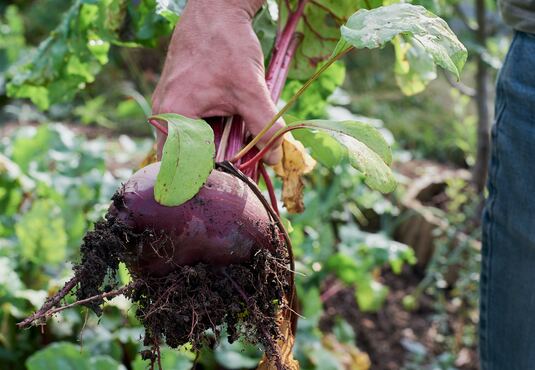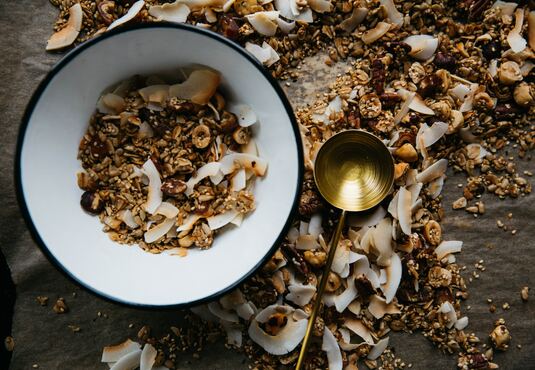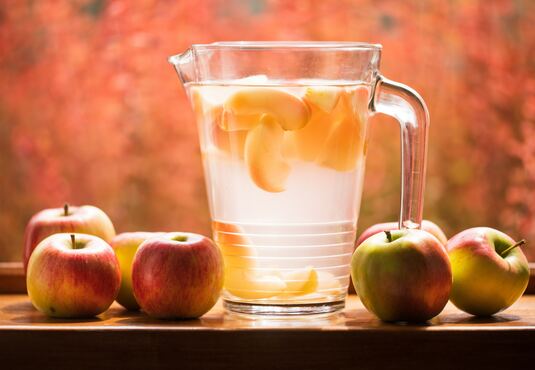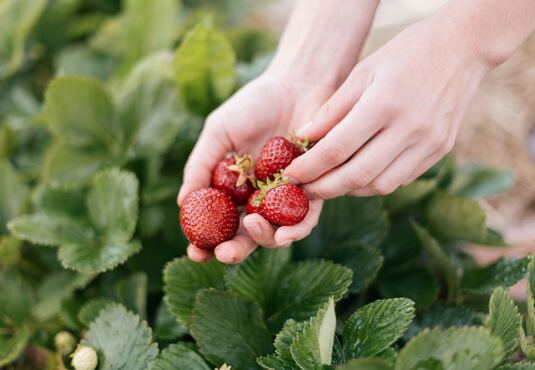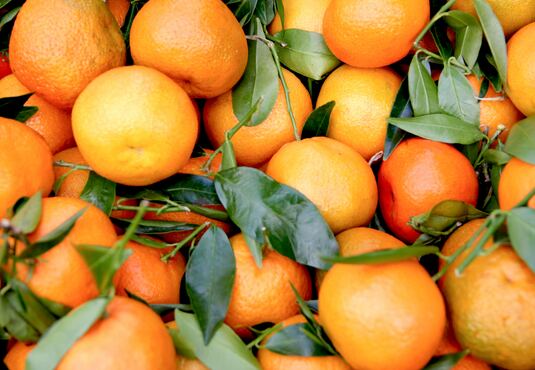
Storing and preserving fruit and vegetables correctly
Storing and preserving fruit and vegetables correctly
Especially in the harvest-rich summer and autumn seasons, it is impossible to eat so many fruits and vegetables as well as herbs at once. In times of great food waste, it is all the more important to make the best use of the current supply. So what is best stored where and how, so that it stays fresh and durable for as long as possible?
Cool and dark storage in the cellar or pantry:
If you have a dark, cool room at home with temperatures below 15 degrees Celsius - for example a cellar room or a pantry (in the past and still today often called "the larder"), you should definitely use it. It is the ideal place to store many types of fruit and vegetables:
- Apples, pears, stone fruit (plums, prunes ...), all tropical fruits (bananas, pineapple, mango, melon, kiwi, lemons, oranges ...)
- Onion, garlic, potatoes, sweet potato, pumpkin, pepper, tomatoes, melanzani, courgette, cucumber, cabbage, avocado, ginger
Classic stored vegetables such as root vegetables (carrots, parsnips, beetroot, etc.) and potatoes should ideally be wrapped in sand to retain moisture for longer. And important: Never store apples, pears, stone fruit or tomatoes next to stored vegetables, because the ripening gas ethylene they emit promotes their sprouting or earlier spoilage.
Storage in the refrigerator
If there is no such room, then fruit and vegetables suitable for the fridge belong - preferably separately - at the bottom of the vegetable drawer. Here it is two to three degrees Celsius warmer than the average temperature inside the fridge. Fruit and vegetables are best placed in glass, clay or plastic containers. Remove leafy greens, e.g. from carrots or radishes, beforehand, otherwise they will lose moisture and the vegetables will quickly become shrivelled. Newer appliance models have special fresh food shops that are cool just above 0°degrees and combined with ideal humidity, so that the shelf life is even longer as a result. But be careful: These vegetables are absolutely sensitive to cold and therefore do not belong in the refrigerator: potatoes, tomatoes, peppers, green beans, pumpkin and courgettes, as well as exotic (citrus) fruits from warm growing regions. They should be stored in a dark and cool place or at room temperature. Also good to know: Unripe avocados, pears, kiwis, nectarines, peaches, plums and damsons can ripen at room temperature until they are ready to eat. And please do not forget: Opened packages of fruit and/or vegetable juices absolutely belong in the refrigerator, even if they can be stored at room temperature for a long time when closed.
Freezing
For longer-term storage, freezing is the easiest preservation method. In addition, valuable vitamins, especially the sensitive vitamin C, are best preserved. The sooner fruit and vegetables are frozen after harvesting, the better. Herbs can also be frozen without any problems. Only for very watery varieties is deep freezing less suitable (e.g. cucumbers, tomatoes). With soft fruits, it is worth pre-freezing the fruits next to each other on a tray or in a flat dish for a few hours before portioning them. This way they keep their shape and can be taken out individually later. Fruit and vegetables can also be used for processing when frozen (e.g. for cake toppings, soups). If bananas are too ripe for you, you can freeze them and use them to make delicious, "naturally sweet" cake batter.
Varied storage in the jar
Bubbling juicers, the sweet smells of preserving compotes or preserving jams and a large storage cellar that filled up until autumn... While year-round self-sufficiency with fruit and vegetables from one's own garden was a matter of course in grandparents' and even earlier times, but was "outdated" for a long time, preserving in jars is now fully in vogue again. It is a wonderful opportunity to take advantage of the seasonal, regional (and usually cheaper) supply and to decide for yourself on the exact origin and ingredients. The range of starting and end products is enormous and goes far beyond grandma's classic recipes. Fruit jams, spreads and jellies or spicy chutneys in the most exciting combinations, often supplemented with herbs or spices, are just as suitable as pickles in vinegar or oil (e.g. herbs in the form of pesto). As you make your way through the digital world of recipes, you will quickly realise that there are no limits to your delightful creativity!
The simple pickling of vegetables in salt - fermenting - has also experienced a new upswing as an ancient craft. In this process, naturally occurring lactic acid bacteria convert the carbohydrates contained in the vegetables to lactic acid in an oxygen-deficient environment - the characteristic sour taste is created and spoilage is prevented. The added salt removes the liquid from the vegetables. In the resulting brine, the lactic acid bacteria can multiply particularly well. A big plus: Fermented vegetables are not only digestible, but also very rich in vitamins, as they have not been heated.
Another "hot" tip at the end:
If you want to have a good homemade meal ready quickly, you can easily fill a larger quantity of freshly cooked ratatouille, stew or spaghetti sauce while it is still hot in individual portions. An absolutely clean working method with sterilised twist-off jars and immediate, perfect sealing with little residual air in the jar are merely the prerequisites for this extremely practical storage method. For a longer shelf life, boil down in a water bath as usual. Enjoy your meal!





